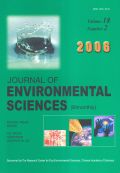Authors: YAN, Jian-hua | TAN, Zhong-xin | JIANG, Xue-guang | CHI, Yong | CEN, Ke-fa
Article Type:
Research Article
Abstract:
Dyestuff residue, a type of hazardous waste, is incinerated in the tubular furnace, and thermodynamic equilibrium model is used to calculate and analyze the chlorine behavior. The HCl emission and its effects on the behaviors of heavy metals are studied. Meanwhile, the effects of three dechlorine reagents are predicted at a high temperature. Results show that HCl emission is dependent on incineration temperature. The HCl evaporated mainly derives from the organic chlorine. Under the working condition
…of 500–900°C, the main products of Hg, Pb, Cu, Ni, Zn, and Mn in reaction with HCl are HgCl_2 (g), PbCl_4 (g), PbCl_2 (g), (CuCl)_3 (g), NiCl_2 (s), NiCl_2 (g), ZnCl_2 (s), ZnCl_2 (g), Zn(g), MnCl_2 (s), and MnCl_2 (g), respectively. Among the three dechlorine reagents, CaCO_3 is optimal to remove chlorine at high temperature, little of HCl is released below 800°C, whereas Fe_3 O_4 is unstable at high temperature.
Show more
Keywords: hazardous waste, thermodynamic equilibrium model, HCl, heavy metals, dechlorine reagents
Citation: Journal of Environmental Sciences,
vol. 18, no. 3, pp. 577-582, 2006
Price: EUR 27.50





